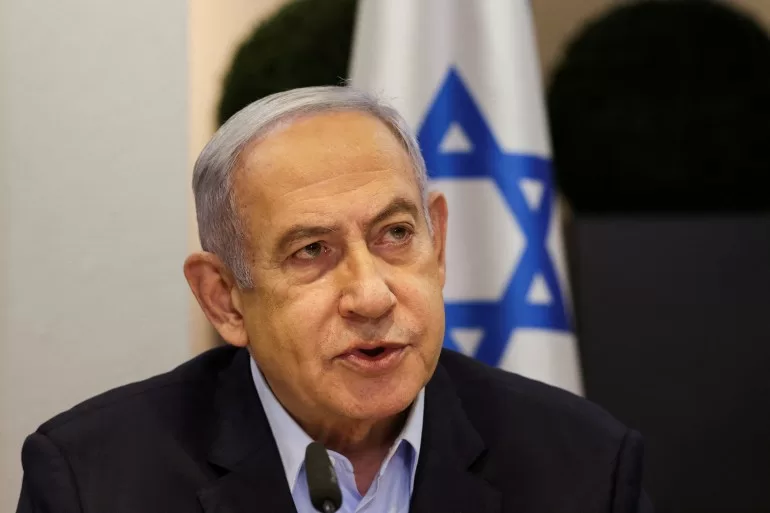According to journalists invited to a background briefing on Friday, the new plan is almost indistinguishable from previous plans agreed by Hamas.
If successful, it would usher in a ceasefire in a conflict that has killed more than 36,000 Palestinians, the majority of them women and children, and enraged communities worldwide.
What does the plan propose?
The plan envisages three stages.
The first stage proposes to involve a six-week ceasefire during which the Israeli army will withdraw from the populated areas of Gaza.
It would be followed by an exchange of Israeli captives and Palestinian prisoners, as well as a “surge” of humanitarian aid to relieve those in the Gaza Strip at risk of famine and more than 82,000 wounded in Israeli attacks.
In the third phase, a permanent ceasefire would follow, facilitating the reconstruction of the enclave, including 60 percent of clinics, schools, universities and religious buildings damaged or destroyed by Israeli forces.
Who likes it?
Hamas stated on Friday that it views the proposals “positively” without going into further detail.
Elsewhere, support for the plan has come from some Israeli politicians and families of captives, as well as the international community.
Benny Gantz, Prime Minister Benjamin Netanyahu’s principal rival, spoke positively of the proposal and asked his two colleagues in the war cabinet – Netanyahu and Defence Minister Yoav Gallant – to convene to discuss the “next steps”.
Gantz had previously threatened to leave the cabinet by June 8 if no plan for Gaza beyond the war had been agreed.
Opposition leader Yair Lapid also promised to support the plan, pledging support of his party Yesh Atid (There is a Future) if those from ultranationalist and far-right parties withdraw support.
United Nations Secretary-General Antonio Guterres also endorsed the plan, as have many of Israel’s allies, including the United Kingdom and Germany.
Who doesn’t?
Much of the opposition to the peace plan has come from within the Israeli cabinet.
On Saturday, Netanyahu said any initiative that did not include the “elimination” of Hamas’s capacity to govern and make war was a “non-starter”.
Netanyahu’s interpretation of the situation in Gaza is at odds with those of the Biden administration.
In his announcement on Friday, Biden indicated that he regarded Hamas’s presence within the enclave to have been so downgraded that a repeat of the October 7 attack was impossible.
As expected, the ultranationalist and extreme right members of Netanyahu’s right-wing coalition – Itamar Ben-Gvir and Bezalel Smotrich – threatened to withdraw from the government and cause its collapse if the proposals were accepted.
Much of the outcome may depend upon parliamentary arithmetic.
The far-right and ultranationalist parties hold 14 seats, while Gantz’s bloc has only eight seats, meaning the far right has more influence on a prime minister who wants to stay in power.
As for Lapid, his 17 seats are offered as support only in what pertains to the peace proposals.
This leaves Netanyahu reliant on the far-right bloc.

Will it be accepted then?
That still is not clear.
The families of captives taken from Israel and held in Gaza are putting pressure on the government to accept the deal, as are parts of Israel’s political class.
From Hamas’s side, it is not clear whether the “positive” light it views the proposal will lead to its acceptance.
Reports say that the group is waiting to hear from its leadership inside Gaza, including Yahya Sinwar, before they can say whether they accept it or not.
Where did the proposals come from?
The origins of the plan remain unclear.
Biden was careful to frame the announcement as an Israeli initiative.
However, few within the Israeli government appeared to have been aware of it before Friday.
It is also very similar to that touted as a previous Israeli proposal agreed by Hamas in late April, leading some observers to suggest this was the US signalling to Israel that the administration was looking to halt the conflict.
Does it matter if the plan doesn’t get through?
The humanitarian situation within Gaza remains dire.
More than one million people have fled Rafah city as Israel continues its deadly assault, which, in two separate incidents last week, killed 66 displaced people.
Whatever healthcare provision remains is struggling to cope in the face of continued shortages of fuel and other vital supplies and equipment, the UN said.
Before this latest proposal, negotiations to draw the war to a close, which have been ongoing through most of the fighting, appeared to be stalling.
Israeli and US negotiators will reconvene in Cairo on Sunday to discuss the reopening of the Rafah crossing and potentially resolve one of the leading causes of the humanitarian crisis in southern Gaza.
